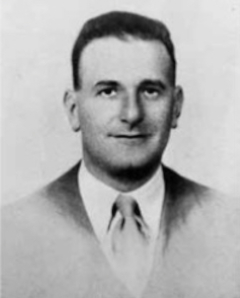Italian submarine fates
Ships hit by Italian submarines
Monte Igueldo
| Type | Cargo ship | |||
| Country | ||||
| Built | 1921 | GRT | 3 | |
| Date of attack | 24 Feb 1943 | Time | 1407 | |
| Fate | Sunk by submarine Barbarigo (T.V. Roberto Rigoli) | |||
| Position of attack | 4° 30'S, 32° 30'W | |||
| Complement | 35 (1 dead and 34 survivors) | |||
| Convoy | ||||
| Notes | At 0925 hours, a smoke was seen on the horizon. It appeared to be traveling at less than 10 knots. T.V. Rigoli decided not to wait for darkness and intercept her in broad daylight. At 1225 hours, Barbarigo dived to carry out a submerged attack. At 1318 hours, two stern torpedoes (450mm) were fired from a distance of 1,200 metres. Both hit but the vessel was only damaged. This was the Spanish Monte Igueldo (5,441 GRT, built 1921) bound from Buenos Aires to Teneriffe and Las Palmas carrying 5,400 tons of wheat and corn and a single ton of sugar for the British consul in Las Palmas. It was another tragic error, as Spain was a not only neutral, but a tacit ally of the Axis. There were thirty-four survivors, and one killed. Her Master, 49 year-old Emilio Ibargurengoitia Aresti, very correctly described the two torpedo hits as made by smaller torpedoes then the third torpedo hit to be a larger one. Monte Igueldo had been stopped the previous day and searched by the light cruiser USS Savannah (CL-42). At 1343 hours, T.V. Rigoli decided to surface to finish the stricken Monte Igueldo with his artillery. The hatch had barely been opened, when a heavy explosion astern shook the submarine. An aircraft was observed passing about 400 metres on the starboard side. The submarine's helm was hard to port as the gunners rushed to their station. The aircraft, identified as an American Consolidated 31 type, came to about 100 metres from the stern as the Breda machine guns opened fire and it flew away toward the south. The forward 100mm gun fired a round at a range of 1,000 metres and came very close in hitting the aircraft. At about 3,000 metres, the aircraft suddenly turned back for a new attack, but another 100mm exploded near and prevented it from completing the attack. It flew away, but appeared to stay at a distance of 10,000 metres. The aircraft was P-6 a PBM-3c (Mariner) of USN squadron VP-74 piloted by Ensign W.J. Barnard, USN, investigating a radar contact, which turned out to be the Spanish Monte Igueldo being torpedoed. It had discovered the submarine surfacing but, as it attacked, the machine guns jammed. It could only deliver a stick of four depth charges from a height of 60 feet. The aircraft was hit by antiaircraft fire in both wings. It had two more depth charges, but the intensity of the antiaircraft fire dissuaded the pilot from carrying out a new attack. Rigoli now decided to finish off his victim before other aircraft arrived to the scene. At 1352 hours, he ordered his gun crews below but as they were executing the order, Gunnery Sergeant Pietro Picchi, who had undone his safety belt, was carried off by a wave. Not wasting time, Rigoli ordered his submarine to turn back in so doing, fired a third torpedo (450mm) from a stern tube. It had an erratic course and missed. At 1404 hours, Picchi who had calmly waited for his submarine to fetch him, was recovered. Although by this time, the identity of the target had been confirmed, Rigoli decided to finish her off. At 1407 hours, a fourth torpedo (533mm) was fired from a bow tube and Monte Igueldo slid beneath the waves. There were thirty-four survivors, and one killed. Her Master, 49 year-old Emilio Ibargurengoitia Aresti, very correctly described the two torpedo hits as made by smaller torpedoes then the third torpedo hit to be a larger one. Monte Igueldo had been stopped the previous day and searched by the light cruiser USS Savannah (CL-42). | |||

